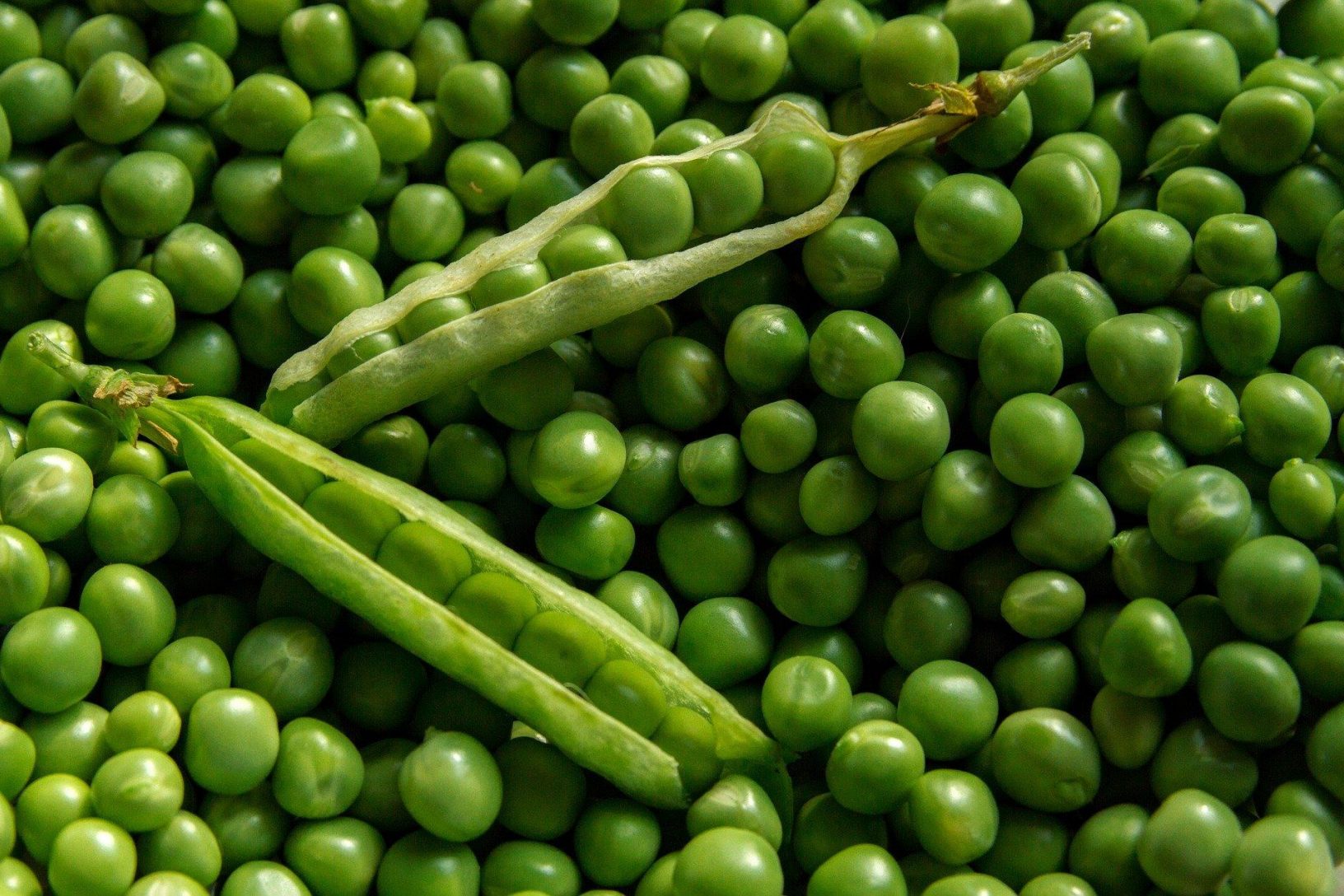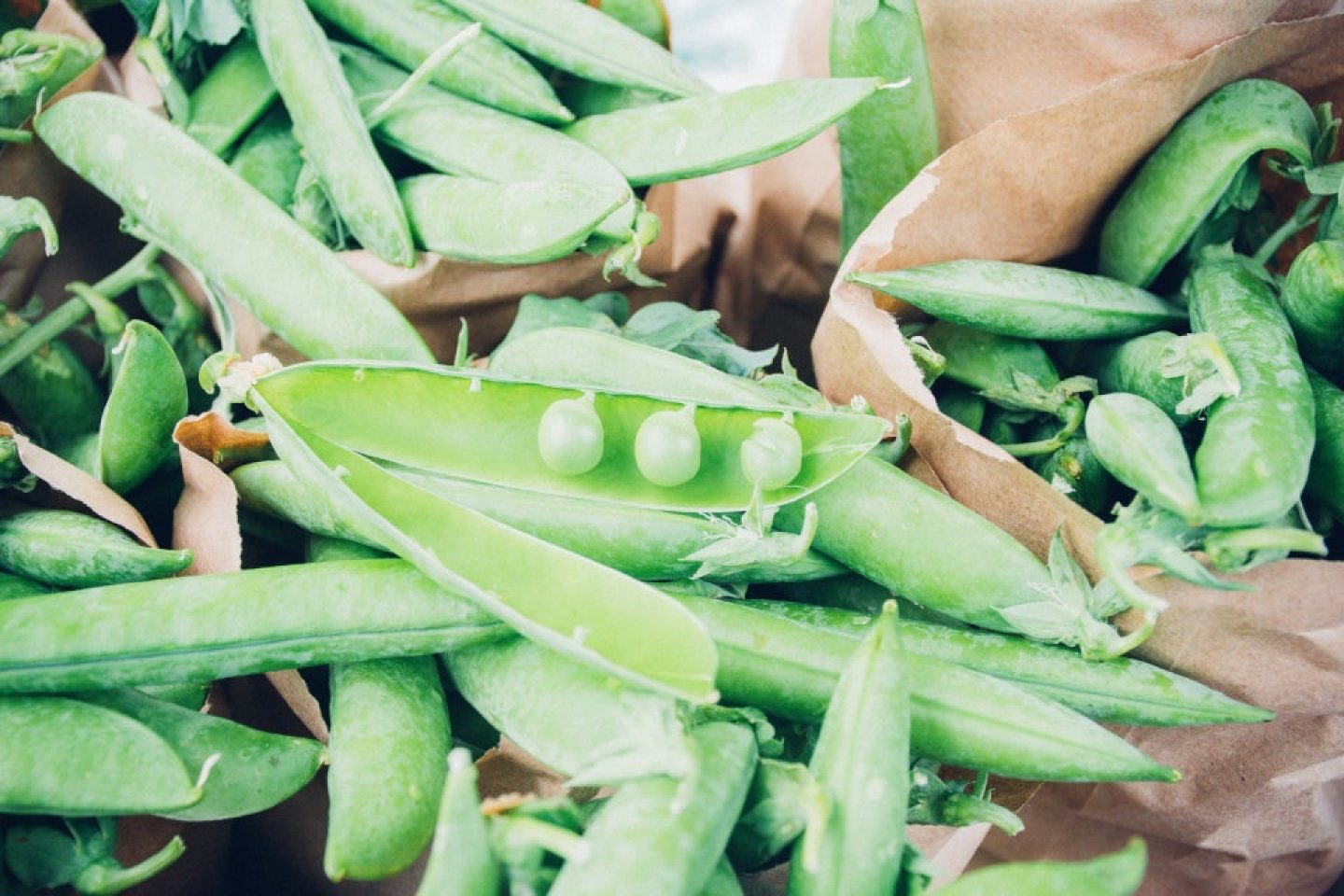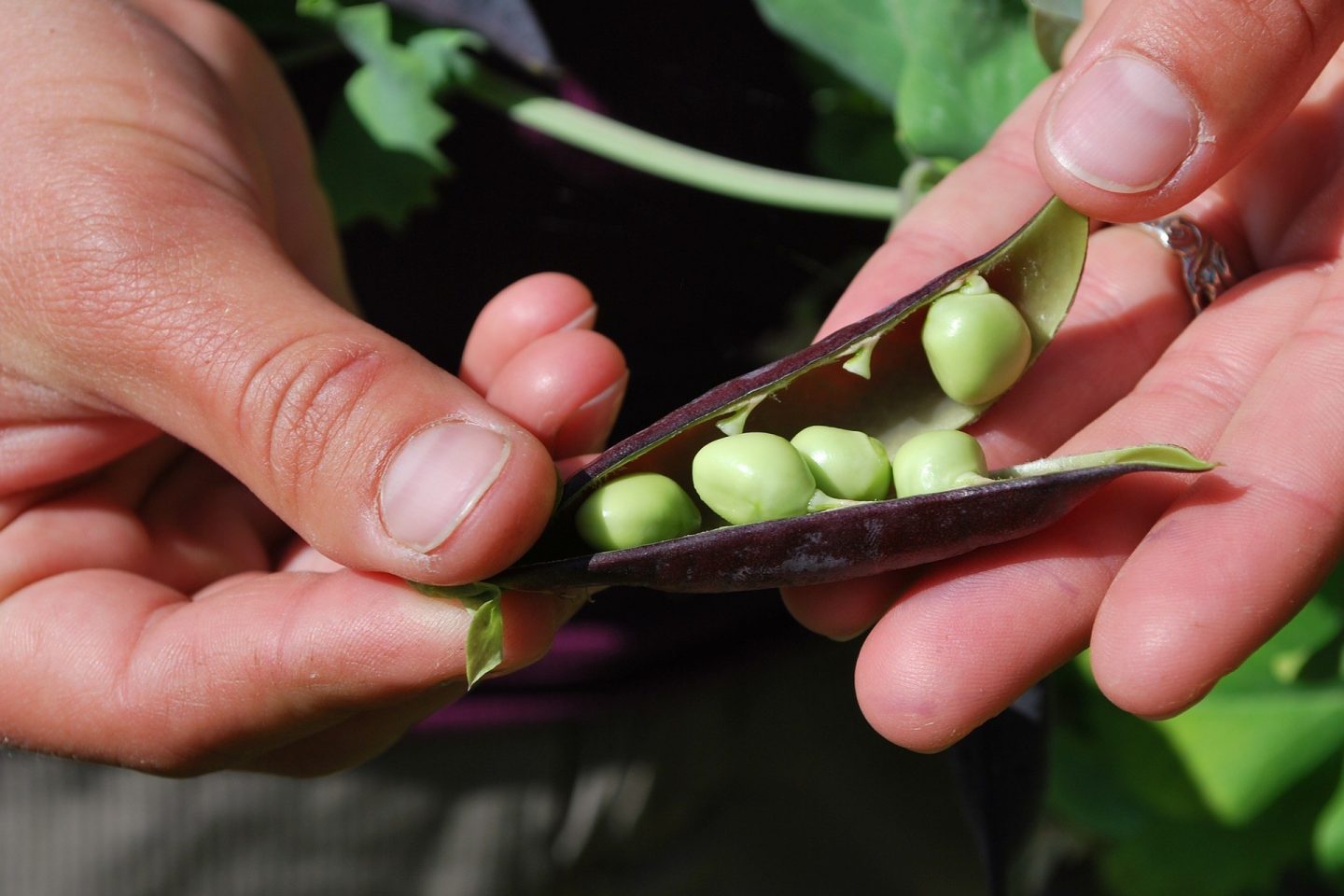Helpful information
Timing: March – June (sow seeds), June – October (harvest)
Where to do it: Outdoors (you can also sow seeds indoors first then plant out)
Garden space: Small garden, large garden, balcony
Sun requirements: Peas need a sunny spot

Timing: March – June (sow seeds), June – October (harvest)
Where to do it: Outdoors (you can also sow seeds indoors first then plant out)
Garden space: Small garden, large garden, balcony
Sun requirements: Peas need a sunny spot

The sweet taste of a pea fresh from the plant is absolutely delicious.
Peas are a fantastic food crop to grow whether you are experienced growing vegetables or starting out. They will fit in most garden spaces, whether you have a big garden or small patio garden as they will grow in the ground or in a container.
Where to grow peas
Peas do better in a very sunny spot in the garden. They like well-drained soil, but are not too fussy.
Because peas have quite large seeds, they are good to sow if you have challenges with dexterity or vision. Younger children may also find them easier to handle than smaller seeds.

There are many different varieties of peas available to grow. These varieties will be classed to let you know when to sow and grow them. The main classifications are:
First early pea varieties can be sown from March to June (or sometimes earlier indoors). They will be ready to harvest in around 10-14 weeks.
Second early pea varieties can be sown from late March to June (again, earlier indoors). They will be ready to harvest in around 12-16 weeks.
Maincrop pea varieties can be sown from March to June. They will be ready to harvest in around 14-18 weeks.
Some gardeners like to do successional sowing. This means instead of sowing your seeds all at once that you sow some every couple of weeks. This hopefully means a longer, spread out harvest.
Types of pea
When you think of garden peas, you probably think of little round peas first - the type we buy frozen. There are other options to try growing, such as mangetout and sugar snap peas. With these, you can eat the whole pod as well as the peas.
Many pea varieties can grow tall and will need support as they grow. You can find dwarf varieties, which involve fewer demanding tasks, like support structure building. They are ideal for growing in containers, raised beds or on a balcony.

When growing garden peas from seed, you have two options. You could sow into small pots or seed trays first, then plant out in the garden later. Or, you can sow seeds directly into the ground. The seed packet should include information on the timings for either option.
If you are sowing directly into the ground, avoid sowing when the soil is very wet or cold. This could impact on germination.
Check the seed packet for detailed sowing instructions. Make sure each plant has enough space - around 7-9cm between plants is a good guide.
Peas are brilliant companion plants to plant with certain other food crops, as they add nitrogen to the soil. Beans, carrots, beetroots are all good examples. But, avoid planting peas near to onions or leeks - they can release a chemical that inhibits nitrogen production by the peas.
Protecting your peas
If you are sowing early in the year, you may need to protect your peas from the cold. Either start them indoors, or in a greenhouse if you have one. Peas don't like their roots being disturbed as they grow. Special, deep root trainer pots are ideal for peas.
You could sow your seeds into homemade newspaper plant pots. These can then be buried in the ground when you plant out your peas as they will biodegrade. This requires less physical movement compared to growing in root trainer pots.
Support for peas
Almost all varieties of pea will need a structure to support their growth. Some dwarf varieties may be ok without one if they are grown close together, as they are likely to intertwine and self-support by intertwining.
You can buy pea support sticks from garden centres and online. These are great for taller varieties. You can criss-cross two rows of sticks to make a support structure, or make a wigwam shape. You can also buy pea netting which can be spread across bamboo sticks or a more solid frame.
Watering and mulching
Regular watering of peas is very important, especially when they start to flower.
Mulching is advisable. It helps ensure a good level of moisture in the soil. You can use a good layer of organic compost, or bark chippings, as a mulch.

Harvesting is where the full joy of the pea comes in! Peas need to be picked regularly. This encourages them to keep flowering and producing more pods.
Harvest round garden peas when the pods look fat and feel full.
Depending when they were sown, peas can generally be harvested between June and September.